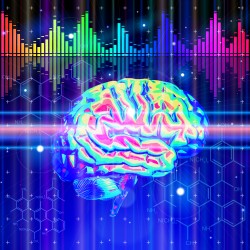Insomnia
Sleep and Brain Training
Alternative Insomnia Treatment
At least 40 million Americans each year suffer from chronic, long-term, sleep disorders. An additional 20 million experience occasional sleep problems. The impact on their health, work, and relationships is immeasurable.
Neurofeedback is a powerful tool for helping people fall asleep and stay asleep. Over 3,000 licensed health professionals, such as psychologists, therapists, and doctors now use this brain training daily with their patients. As a group, they report significant and consistent improvements for clients’ sleep problems.
Why Is Neurofeedback Effective for Insomnia?
Neurofeedback has a powerful ability to positively impact sleep because it works on the areas of the brain that allow and regulate sleep. With neurofeedback, most people can train their brain to allow sleep again by rewarding it for creating healthier patterns. Sleep can improve surprisingly quickly for clients who have seen numerous specialists and struggled with sleep for years. Falling asleep and staying asleep is clearly the job of the brain.
Many brain training options can help, as well as making lifestyle changes and changes in sleep “hygiene”. A skilled neurofeedback clinician can review different options with clients to help them assess what’s most appropriate for them, including several brain regulating technologies such as Alpha-Stim and Brain Music. Neurofeedback is non-invasive, and produces no undesirable side effects.
What are the most common sleep issues that improve with neurofeedback?
 Insomnia – Difficulty falling asleep or maintaining sleep during the night
Insomnia – Difficulty falling asleep or maintaining sleep during the night- Difficulty waking from sleep
- Difficulty getting to bed
- Not feeling rested after sleep
- Sleeping too long (over 10 hours)
- Physically restless sleep
- Nightmares
- Bedwetting (Nocturnal enuresis)
- Sleepwalking
- Restless leg syndrome – Leg discomfort or a need to move legs, disrupting sleep
- Bruxism – Teeth grinding during sleep
- Sleep terrors – Abrupt arousal with intense fear, no dream recall or memory of event
- Narcolepsy
- Dysregulated sleep patterns/cycles (circadian rhythms)
Brain training often helps these problems as it improves brain regulation. For instance, a 75-year-old woman reported that she “slept like a baby for the first time in 25 years” after neurofeedback training. Parents of children with Attention Deficit Hyperactivity Disorder (ADHD) often say it’s easier to get their kids to sleep when they’ve had neurofeedback, and depressed clients remark they have a much easier time getting going in the morning. These are common reports, and just a few examples of the improvements reported.
The Role of the Brain and Sleep
 The brain regulates sleep. The EEG, which shows brainwaves, clearly reflects changes in sleep stages. Training brain patterns using neurofeedback to decrease or increase brainwave activity appears to help the brain normalize sleep. Based on reports from a large number of health professionals, the evidence shows that training brain patterns impacts sleep regulatory mechanisms, and people sleep better.
The brain regulates sleep. The EEG, which shows brainwaves, clearly reflects changes in sleep stages. Training brain patterns using neurofeedback to decrease or increase brainwave activity appears to help the brain normalize sleep. Based on reports from a large number of health professionals, the evidence shows that training brain patterns impacts sleep regulatory mechanisms, and people sleep better.
Since sleep is complex and involves many systems, it’s not possible to affirm that sleep problems always improve as a result of neurofeedback. Yet, clinicians say they routinely expect changes to occur in sleep patterns after appropriate training for a large percentage of their clients.
As with any program, a complete sleep assessment is helpful. Sleep hygiene issues (including caffeine, alcohol, and other behavioral factors) among other potential contributory factors, such as possible sleep apnea, also need to be carefully reviewed and corrected in combination with neurofeedback training.
To learn more about how neurofeedback can help with insomnia or other sleep problems, please visit our Neurofeedback Provider List to see if we have a clinician listed near you.

